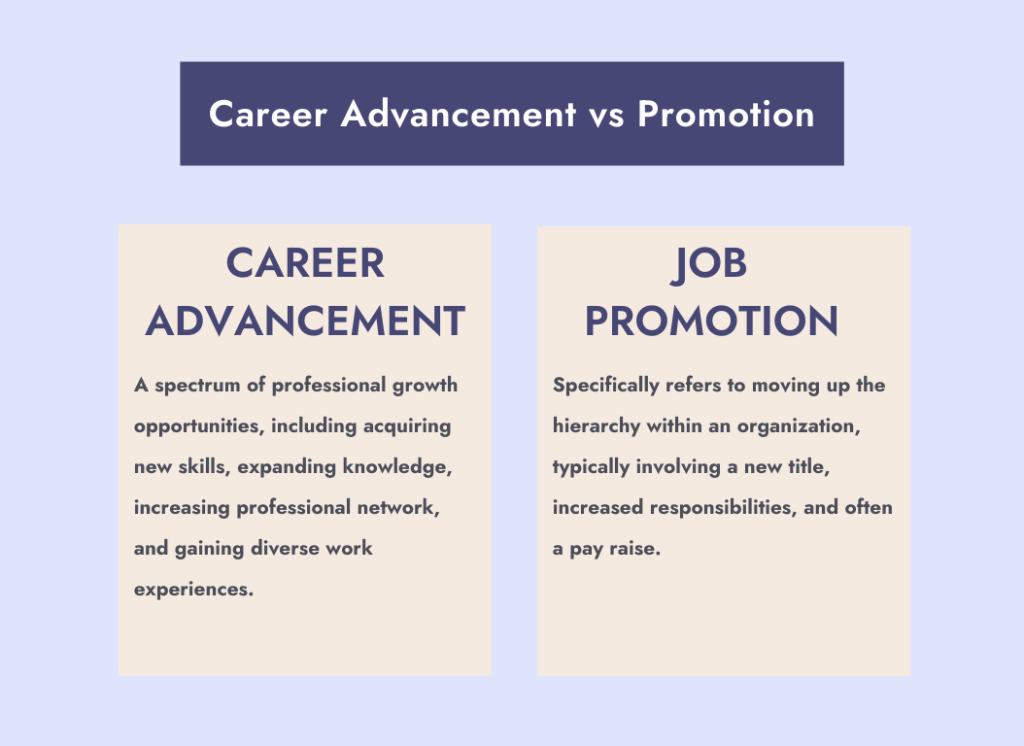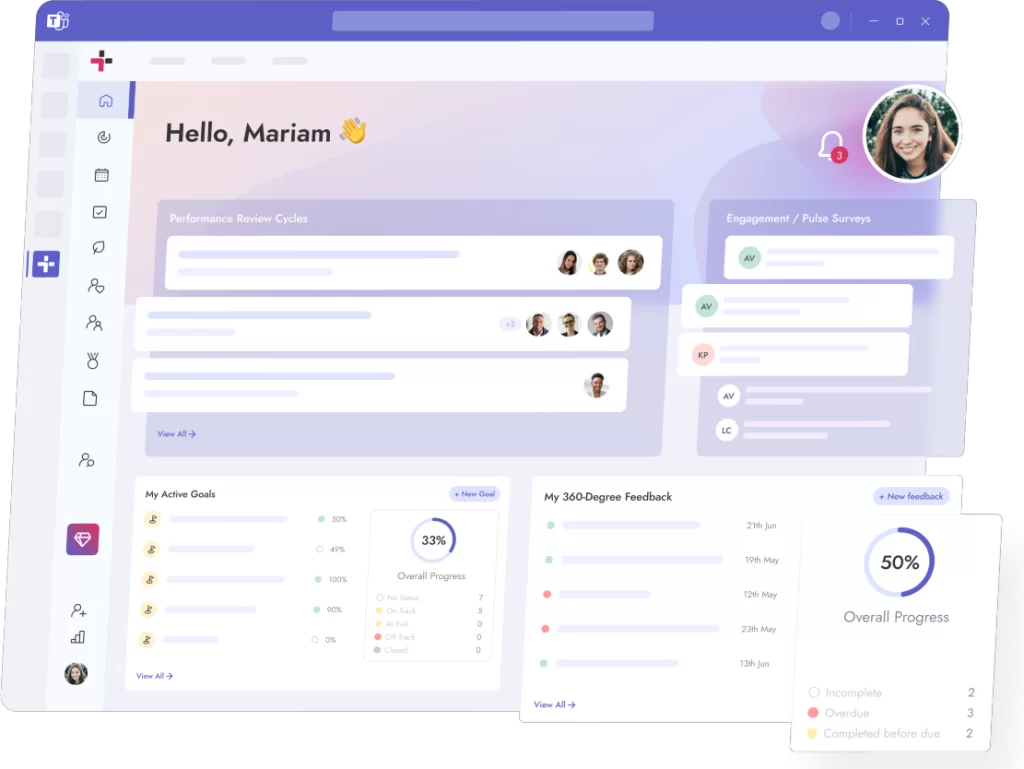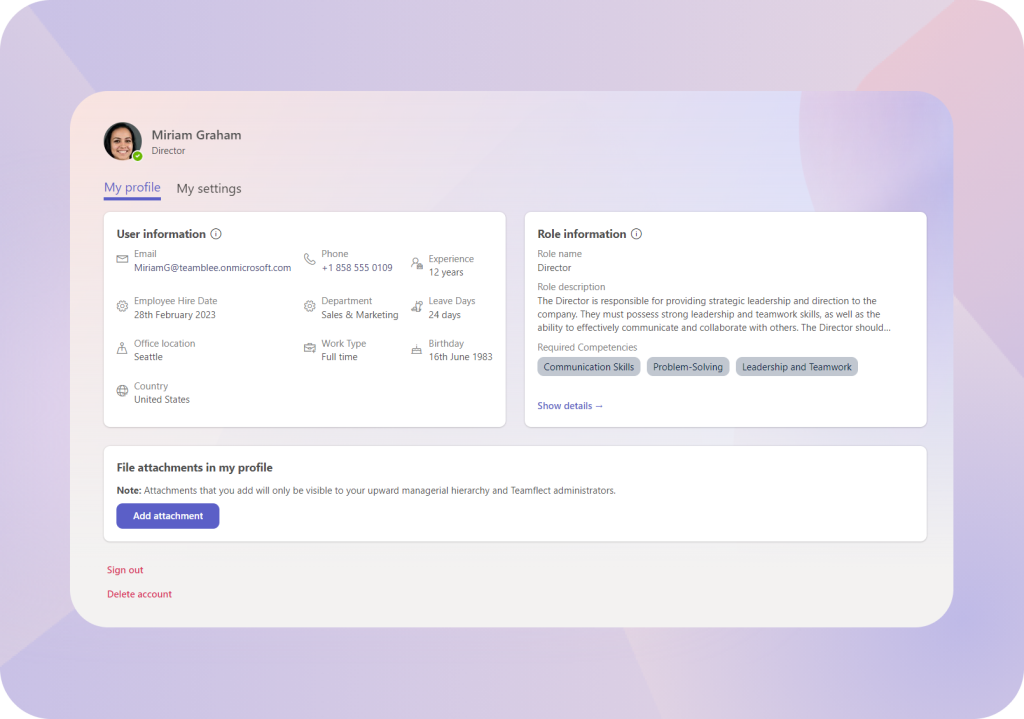Career advancement is a multifaceted concept that resonates with virtually every professional, regardless of their industry or role.
It’s more than just climbing the corporate ladder; it’s about personal and professional growth, expanding your horizons, and increasing your impact within your chosen field.
But what does career advancement truly entail, and how does it differ from simply getting a job promotion?
Being a complex subject with various stakeholders within an organization, we will be approaching the topic of career progression from multiple different angles, covering both how employees can advance their careers and how organizations can provide career advancement opportunities
Table of Contents
The Definition Of Career Advancement
What is career advancement? By definition, career advancement is the process through which an individual makes significant progress in their career.
Advancement of an individual’s career can manifest itself in different forms; acquiring a higher position, gaining more responsibility, earning a better salary, or achieving a greater sense of fulfillment and purpose in one’s work.
It’s a holistic concept that encompasses not just the vertical movement in an organizational chart but also the expansion of one’s skills, knowledge, and influence.
Career Advancement vs Job Promotion

Is career progression the same as job promotion? While often used interchangeably, career advancement and job promotion are not synonymous.
A job promotion typically refers to moving up to a higher position within the same organization, often accompanied by an increase in pay, responsibilities, and status.
However, career advancement is a broader term that includes job promotion but also encompasses other forms of professional growth, such as lateral moves to positions that offer new challenges, learning opportunities, or a better alignment with one’s career goals.
Different Types Of Professional Advancement

Career enhancement manifests itself in many different ways throughout an individual’s career path. While many envision their careers resemble their career journeys in a straight upward moving path, the truth is often more complicated. Some of the different ways professional advancement can take place include the following:
Vertical Advancement: This is the most recognized form of career advancement, where an individual moves up to higher levels of authority, responsibility, and compensation within their organization or field.
Horizontal Advancement: Sometimes, growth comes from moving sideways. Horizontal advancement might involve switching to a different department, role, or industry to broaden one’s experience, develop new skills, or reignite passion for work.
Skill and Knowledge Expansion: Advancing one’s career isn’t confined to job titles or roles. It also includes the acquisition of new skills, knowledge, and competencies that enhance one’s value to current and future employers.
Increased Impact: For many, career advancement means having a more significant impact on their organization, industry, or community. This can manifest through leading larger teams, driving pivotal projects, or influencing industry trends and practices.
6 Examples Of Career Advancement
1. Vertical Advancement: Climbing the Corporate Ladder
From Junior Analyst to CEO: Consider the journey of a junior analyst in a finance firm who progresses over the years to become the CEO. This path might involve multiple promotions, starting from analyst to senior analyst, then to manager, director, and eventually executive roles. Each step up the ladder involves more responsibility, higher stakes decision-making, and a broader vision for the company’s future.
2. Horizontal Advancement: Expanding Horizons
From Marketing to Product Management: A marketing professional in a tech company might transition to a product management role. This shift allows the individual to apply their understanding of market needs and customer engagement to the development and strategy of product offerings, broadening their expertise and impact within the company.
3. Intrapreneurial Advancement: Innovating Within
Leading a New Division: An employee in a large corporation who proposes and leads a new initiative or division demonstrates intrapreneurial advancement. For instance, a software developer might pitch an idea for a new software solution, leading to the creation of a new product line within the company. This individual might advance to lead the division, gaining autonomy and a significant role in shaping the company’s direction.
4. Entrepreneurial Advancement: Carving Your Own Path
Starting a Business: Career advancement isn’t confined to climbing the ranks within an existing company. For some, like a consultant with deep expertise in a niche area, the next step might be launching their own consulting firm. This move represents a significant advancement, transitioning from employee to business owner, and entails a broadened scope of responsibilities, challenges, and rewards.
5. Impact-Driven Advancement: Making a Difference
From Teacher to Policy Maker: A teacher who transitions into an educational policy-making role exemplifies impact-driven advancement. By moving into a position where they can influence educational standards and practices on a broader scale, they advance their career in a way that amplifies their ability to contribute to the education sector.
6. Skill and Knowledge Enhancement
Earning Advanced Certifications: Professionals in various fields, like IT, might advance their careers by obtaining advanced certifications or degrees. An IT professional specializing in cybersecurity, for instance, could enhance their career prospects and industry authority by earning a highly respected certification in cybersecurity, leading to higher-level positions or specialized roles within the field.
.
How To Map Employee Careers Digitally?
There are plenty of different methods of approaching career advancement from the standpoint of a company. Various tools can be applied to build career maps for employees.
Some effective practices and methodologies include:
The real challenge is that these practices require vigilant monitoring and tracking of an incredible amount of employee data.

One of the best ways to eliminate this challenge is to take advantage of performance management software with strong career and talent management modules. One of the best tools for this very use case is Teamflect.

As the best performance management solution in the Microsoft Teams and Outlook ecosystems, Teamflect helps organizations build career paths for their employees by integrating core competencies, job descriptions, and responsibilities into performance reviews and goal-setting.



